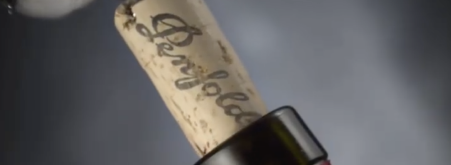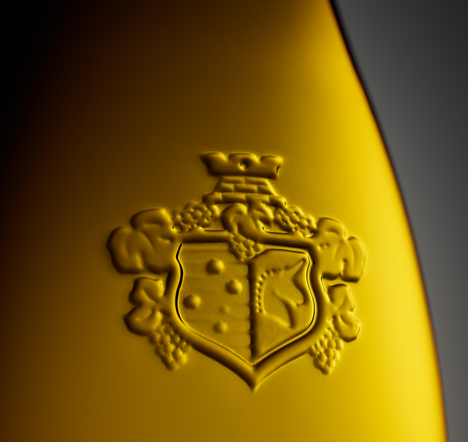年月がキャラクターを創る
Bin 311 Chardonnay 2023
Australian Release
Bin 311 Chardonnay 2023
Bin 311 Chardonnay truly reflects the winemakers’ mantra of going where the fruit grows best and where it best suits style. From the 2017 release of Bin 311, fruit sourcing moved from single region to multi-regional. Today the cool climate vineyards of Tasmania, Tumbarumba, Henty and the Adelaide Hills are our primary sources of fine quality chardonnay. In true Bin 311 style, not unlike Yattarna, it exhibits lemon/lime aromas and a mineral acid backbone, complemented by barrel fermentation and maturation in new and seasoned oak.
| 品種
Chardonnay
|
Chardonnay |
|---|---|
| ヴィンテージ
2023
|
2023 |
| ボリューム
750 mL
|
750 mL |
| エンクロージャ
Screw Cap
|
Screw Cap |
| ピーク飲酒
Now - 2035
|
Now - 2035 |
Bin 311 Chardonnay truly reflects the winemakers’ mantra of going where the fruit grows best and where it best suits style. From the 2017 release of Bin 311, fruit sourcing moved from single region to multi-regional. Today the cool climate vineyards of Tasmania, Tumbarumba, Henty and the Adelaide Hills are our primary sources of fine quality chardonnay. In true Bin 311 style, not unlike Yattarna, it exhibits lemon/lime aromas and a mineral acid backbone, complemented by barrel fermentation and maturation in new and seasoned oak.
| 95 Points - Dave Brookes, Halliday Wine Companion |
Often called our “baby Yattarna,” — sourced from premium cool-climate regions, barrel-fermented in French oak. It includes top-tier parcels just shy of Yattarna and Reserve Bin A, always over-delivering.
– Kym Schroeter, Penfolds White Winemaker

Pale straw, lemon brightness.

A gentle swirl reveals a nose that is both refined and complex. Delicate scents of talcum powder, followed by the refreshing mineral/floral notes of bath salts. Hints of candle wax and fresh linen emerge, while beeswax adds a subtle richness. The nutty sweetness of pistachio nougat is interlaced with the aroma of honeysuckle florals, providing depth and intrigue. Notes of raw cashew bring an earthy dimension that is balanced by the zesty spice of white peppercorns. Rounding out the aromatics are layers of preserved lemon and lemon rind, which lend a citrus sharpness, as well as the soft sweetness of friands and Madeleine sponge cakes piped with tangy curd.

Upon tasting, this vintage reveals a palate that mirrors its aromatic intricacy. Leading with the intense clarity of preserved lemon, it unfolds to reveal succulent nectarine and zesty pink grapefruit flavours that are tightly coiled for longevity. White macadamia and almond meal provide a nutty undertone, while toasted candle nuts contribute to the wine’s layered/silky texture. A refreshing burst of citrus sorbet or sherbet enlivens the palate further, with mandarin peel adds breadth to the citrus spectrum. The texture nods to a creamy panna cotta or velvety buttermilk – rich yet perfectly balanced against the taut structure.
Vintage Conditions
In Tasmania, a winter of sparse rainfall gave way to a bountiful spring, including an unprecedented cold front on October 14th that set new rainfall records. These challenging conditions curtailed yields, diminishing bunch sizes. Yet, the temperate embrace of the Tasmanian summer offered a silver lining—a smaller crop of chardonnay grapes which matured exquisitely, delivering concentrated flavours and finesse. Adelaide Hills entered the season with near-average winter precipitation, laying a foundation for healthy soil moisture levels. Despite an arid July and access difficulties caused by June and August rains, the vines endured. Torrential October and November rains posed mechanical challenges but heralded a delayed budburst. Cold snaps lingered into December, culminating in isolated hail events that tempered our yield expectations. The remainder of the growing period was notably dry; canopies flourished until early January. As February's warmth unfolded, it fostered rich flavour profiles and maintained acidity within our Chardonnay harvest. Tumbarumba navigated through its third La Niña season in succession, leading to a spring deluge that saw yields fall to half of anticipated levels. Nevertheless, a subsequent warm and arid summer provided salvation—the limited crop achieved perfect ripeness, yielding chardonnay of uncompromised 'A' grade quality.
| GRAPE VARIETY
Chardonnay
|
Chardonnay |
|---|---|
| VINEYARD REGION
South Eastern Australia
|
South Eastern Australia |
| wine analysis
Alc/Vol: 13%, pH: 3.17, Acidity: 6.7g/L
|
Alc/Vol: 13%, pH: 3.17, Acidity: 6.7g/L |
| MATURATION
Eight months French oak barriques (21% new)
|
Eight months French oak barriques (21% new) |
The Bin 311 Story
Bin 311 was first vintaged in 2005. True to House Style, Bin 311 Chardonnay takes advantage of the classification system and flow down of high-grade fruit, including material initially earmarked for Yattarna Chardonnay. Although primarily based on Tumbarumba fruit until recent years, the style is not based on terroir, but on a high altitude/low latitude cool-climate fruit profile.
Discover Collection


